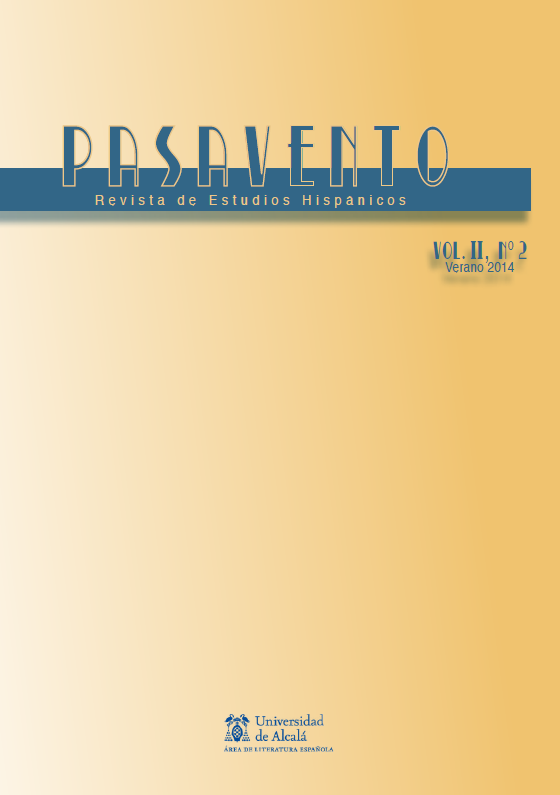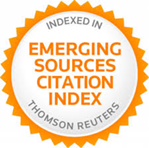Brutal New World. Cultural Hybridity in the Representations of the Border in Recent Mexican Literature
DOI:
https://doi.org/10.37536/preh.2014.2.2.1003Keywords:
Postmodernity, Ingovernability, Chronotopes, Line, Zone, Crime, Aleph, ApocalypsesAbstract
While the Mexican northern border began to assert itself in literature with the novel of Mexican Revolution and is present in stories by Juan Rulfo and José Revueltas, its imaginary explosion has metamorphosed itself in recent years within the overlapping frame-works of economic globalization (NAFTA), drug trafficking and migration. Since the beginning of the 90's, the velocity of economic, social and demographic change has heavily hybridized the border's culture inducing both social science studies and literature to the writing of hybrid narratives that try to capture a dynamic, complex and violent contemporary reality: short stories as television scripts or plays (Luis Humberto Crosthwaite); kaleidoscopic novel (Carlos Fuentes); elegiac crime chronicle (Sergio González Rodríguez), rhythmic novelization of horror (Roberto Bolaño), fables of initiation (Yuri Herrera). The border, Terra incognita and blueprint for the future, condenses the features of a new literary space, mythic and poetic, yet not wholly devoid of realistic aspects. It reaches the status of metaphor of the literary territory to explore.
References
Ábrego, Perla (2011): “La frontera como sistema simbólico en la literatura mexicana contemporánea”. En: Revista Surco Sur, vol. 2, n.° 3, pp. 47-52.
Baudelaire, Charles (1972): Les fleurs du mal. “Epilogue” [1861]. París, Gallimard.
Bellver Sáez, Pilar (s.f.): “Tijuana en los cuentos de Luis Humberto Crosthwaite: el reto a la utopía de las culturas híbridas de la frontera”. En: Ciberletras, n.º 20. Disponible en <http://www.lehman.cuny.edu/ciberletras/v20/bellver.html>. Última visita: 12.04.2014.
Bolaño, Roberto (2004a): 2666. Barcelona, Anagrama.
Bolaño, Roberto (2004b): Entre paréntesis. Barcelona, Anagrama.
Boldy, Steven (2001): “Lo real fronterizo en La frontera de cristal de Carlos Fuentes”. En: América, n.° 25, pp. 83-93.
Castellanos Moya, Horacio (2008): “El cadáver es el mensaje. Apuntes personales sobre literatura y violencia”. En: Istmo, n.º 17. Disponible en <http://www.istmo.denison.edu/n17/foro/castellanos>. Última visita: 09.04.2014.
Crosthwaite, Luis Humberto (2011): Instrucciones para cruzar la frontera. México, Joaquín Mortiz.
Domínguez Michael, Christopher (2011): “Roberto Bolaño y la literatura mexicana” [2007]. En: Fernando Moreno (ed.): Roberto Bolaño. La experiencia del abismo. Santiago de Chile, Lastarria, pp. 45-52.
Fuentes, Carlos (1985): Gringo viejo. México, Fondo de Cultura Económica.
Fuentes, Carlos (1987): Cristóbal Nonato. México, Fondo de Cultura Económica.
Fuentes, Carlos (1995): La frontera de cristal. México, Alfaguara.
García Canclini, Néstor (2009): “Cómo dejó de ser Tijuana laboratorio de la posmodernidad. Diálogo entre Néstor García Canclini y Fiamma Montezemolo”. En: Alteridades, vol. 19, n.° 38, pp. 143-154.
González Rodríguez, Sergio (2002): Huesos en el desierto. Barcelona, Anagrama.
González Rodríguez, Sergio ( 2008): “ Roberto B olaño z en: f otografía y n arrativa i ndicial”. En: http://www.revistadossier.cl/detalle.php?id=121>. Última visita: 11.04.2014.
Herrera, Yuri (2009): Señales que precederán al fin del mundo. Cáceres, Periférica.
Olivier, Florence (2001): “Une littérature d’actualité légère et engagée: La frontera de cristal de Carlos Fuentes”. En: América. Cahiers du CRICCAL, n.° 25, pp. 77-82.
Olivier, Florence (2007a): Carlos Fuentes o la imaginación del otro. Jalapa, Editorial Veracruzana.
Olivier, Florence (2007b): “Santa Teresa en 2666 de Roberto Bolaño. Ciudad límite, ciudad del crimen impune”. En: Teresa Orecchia-Havas (ed.): Les Villes à la fin du xxème Siècle en Amérique Latine. Berna, Peter Lang, pp. 31-42.
Downloads
Published
How to Cite
Issue
Section
License
Copyright (c) 2014 Pasavento. Revista de Estudios Hispánicos

This work is licensed under a Creative Commons Attribution 4.0 International License.








